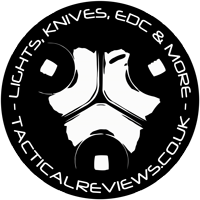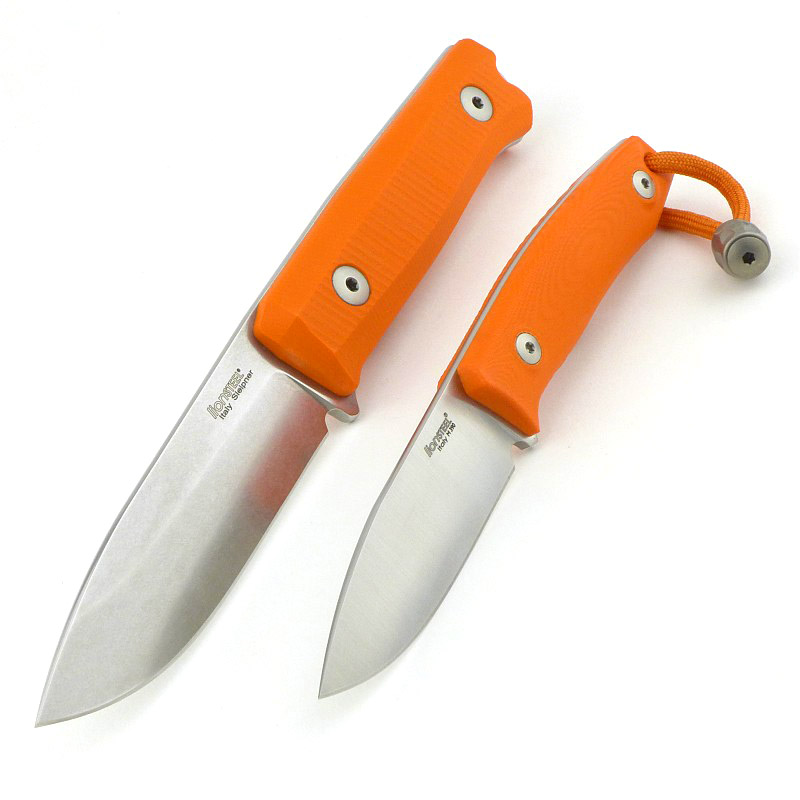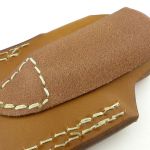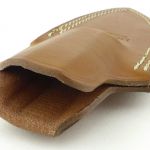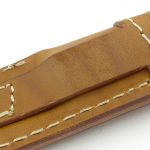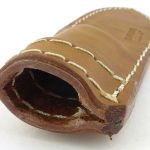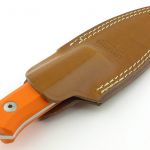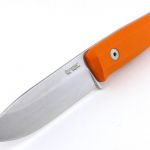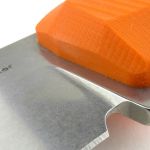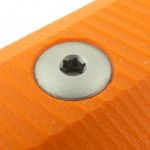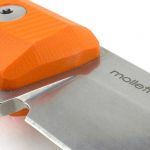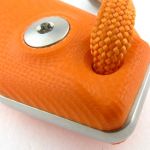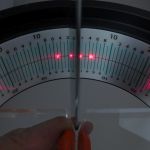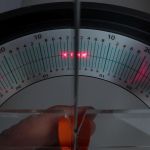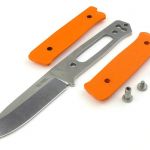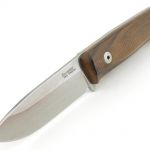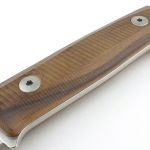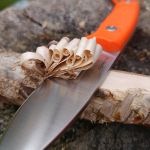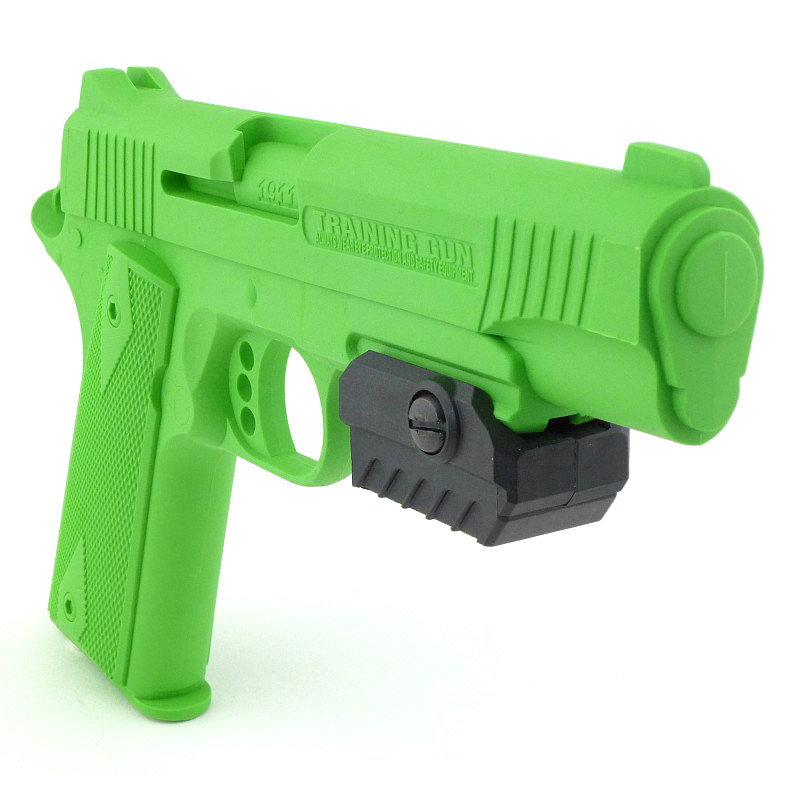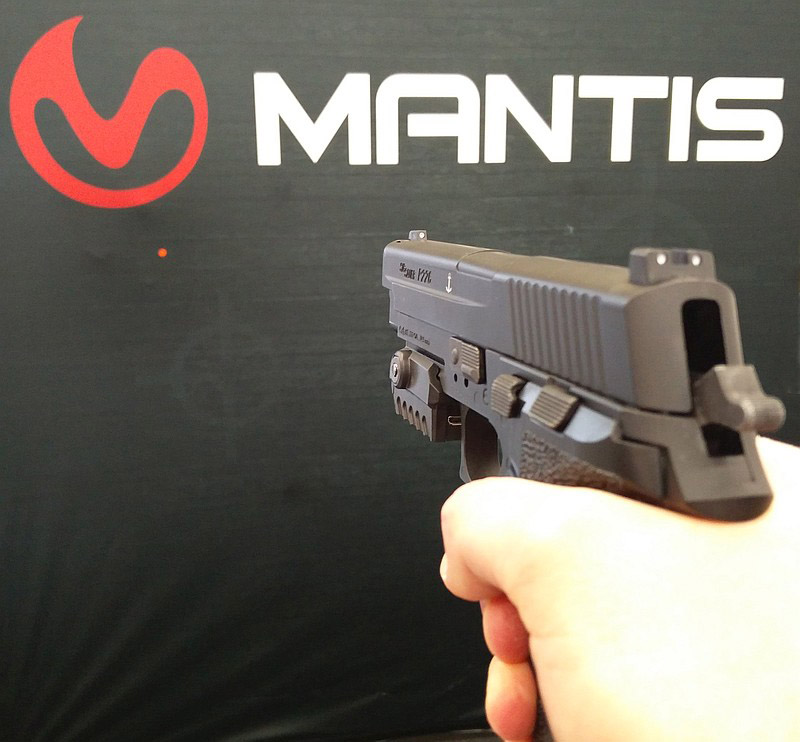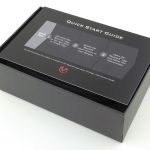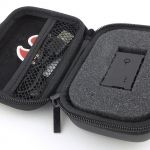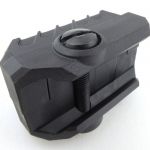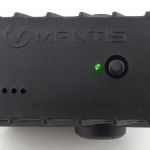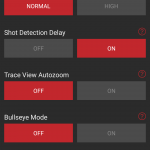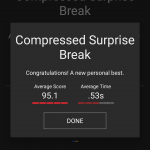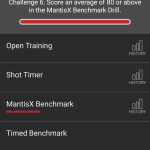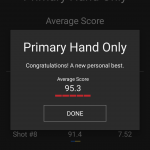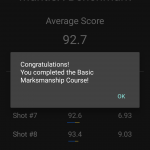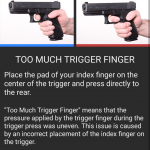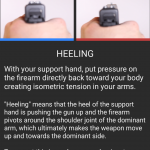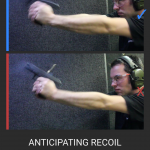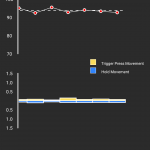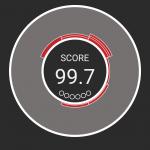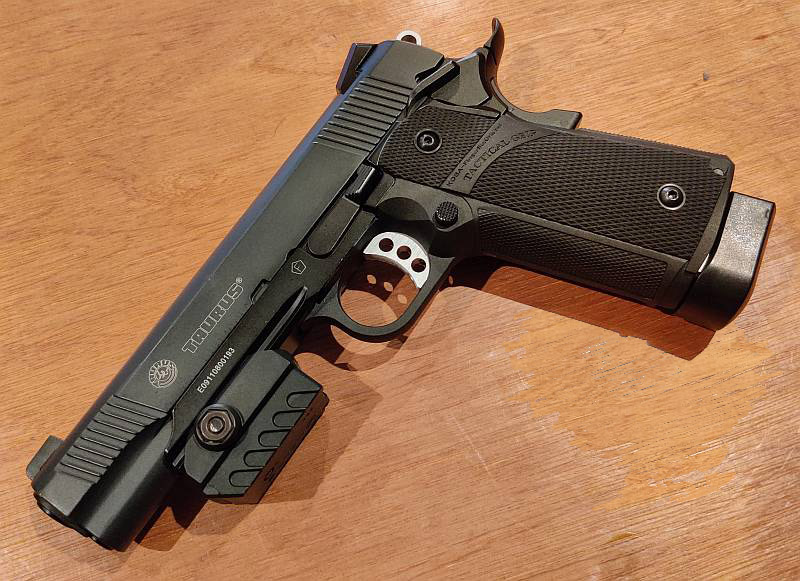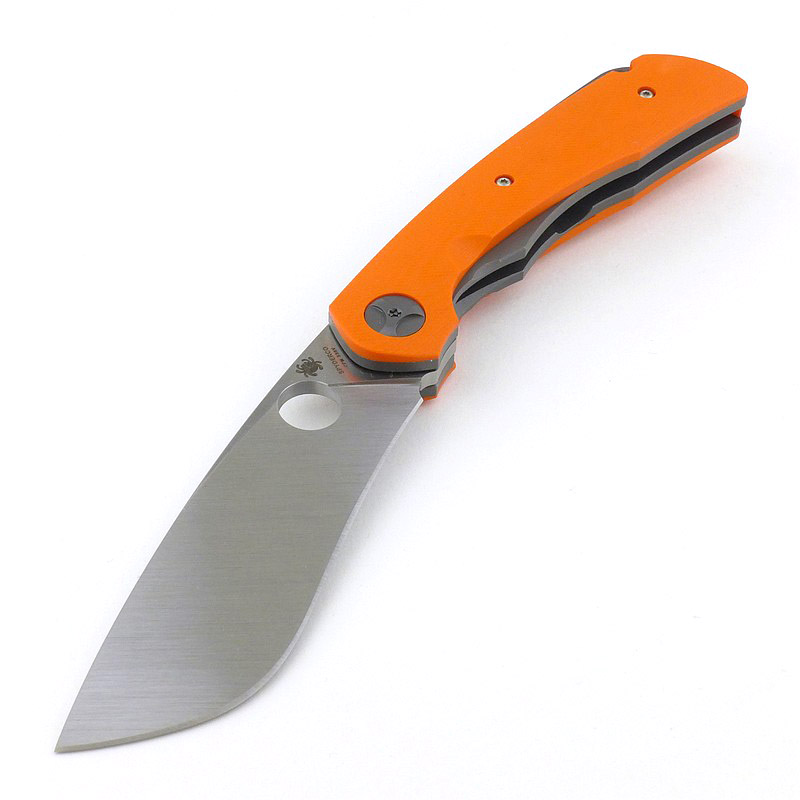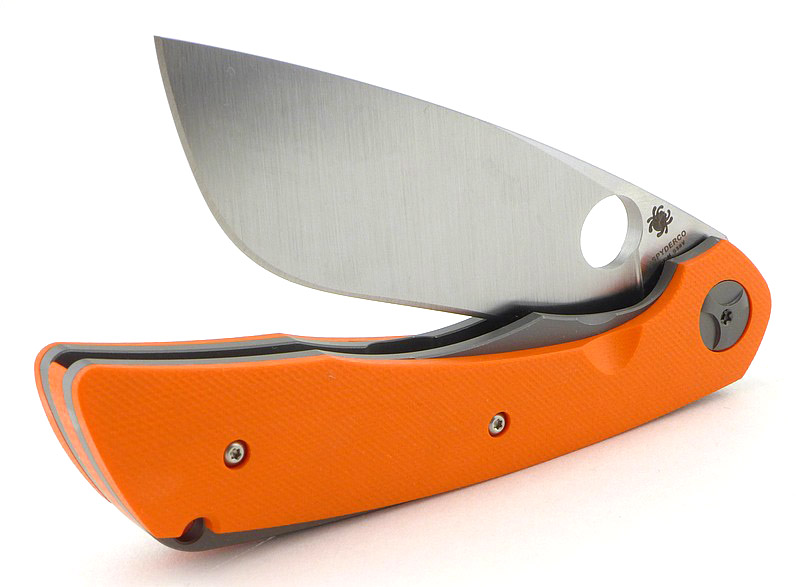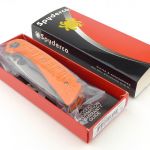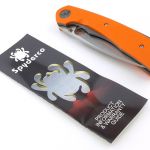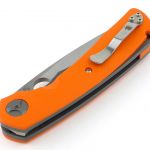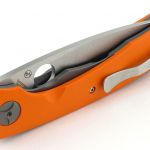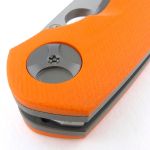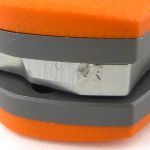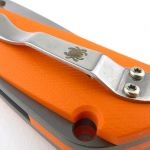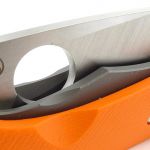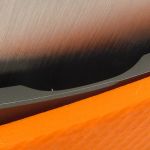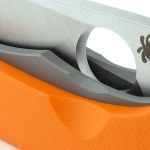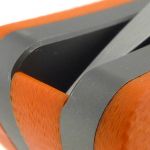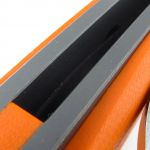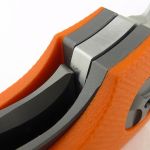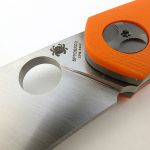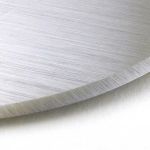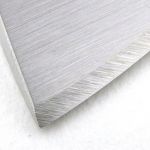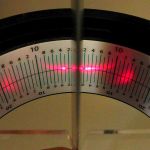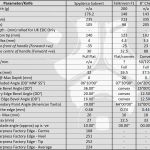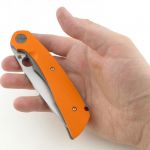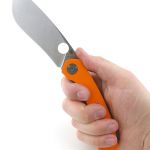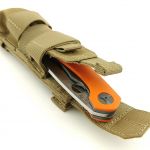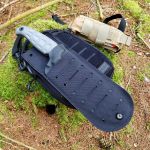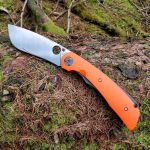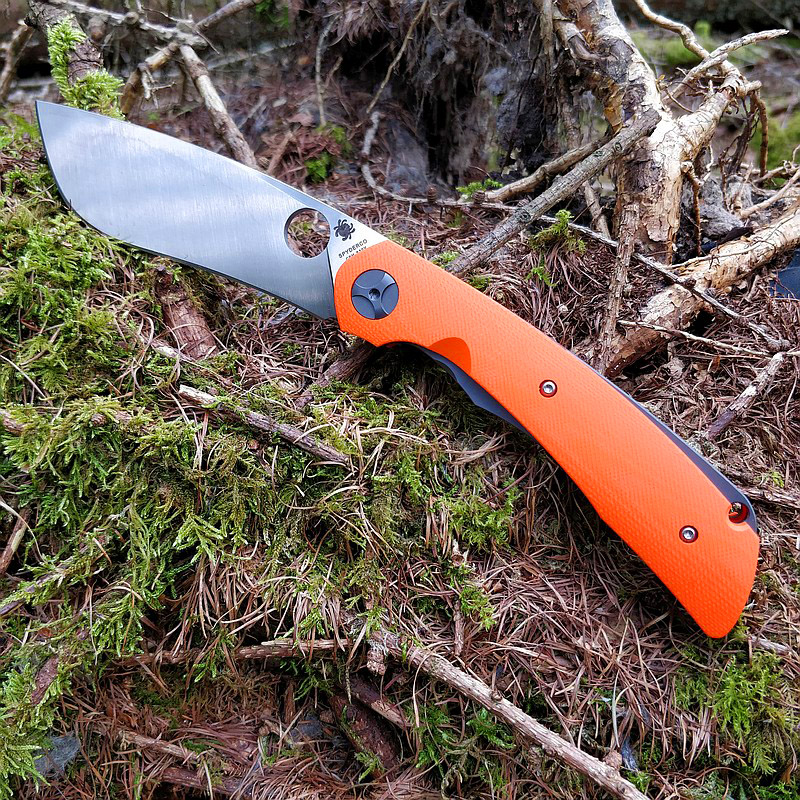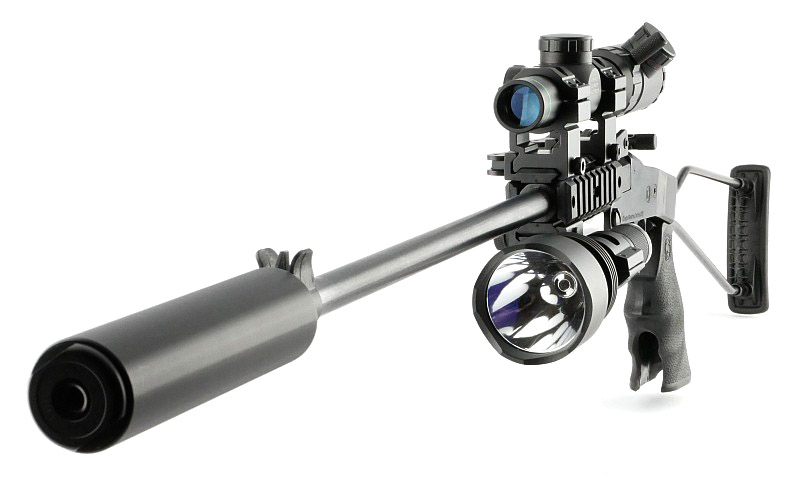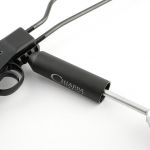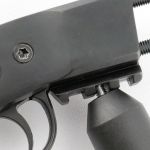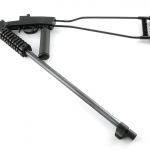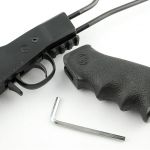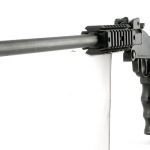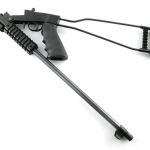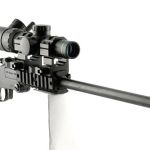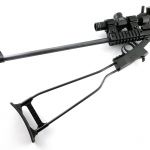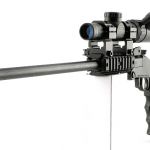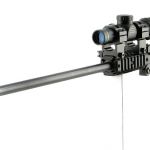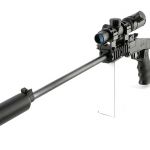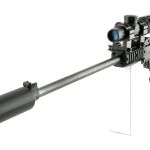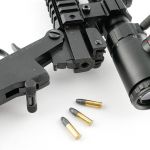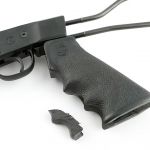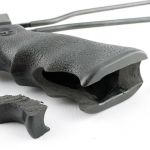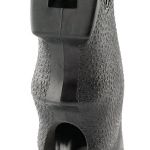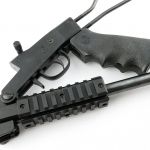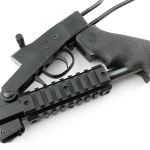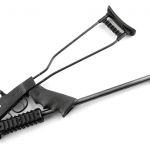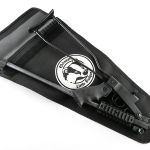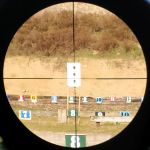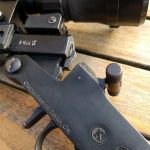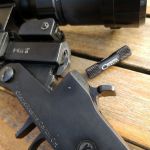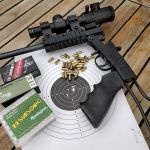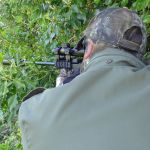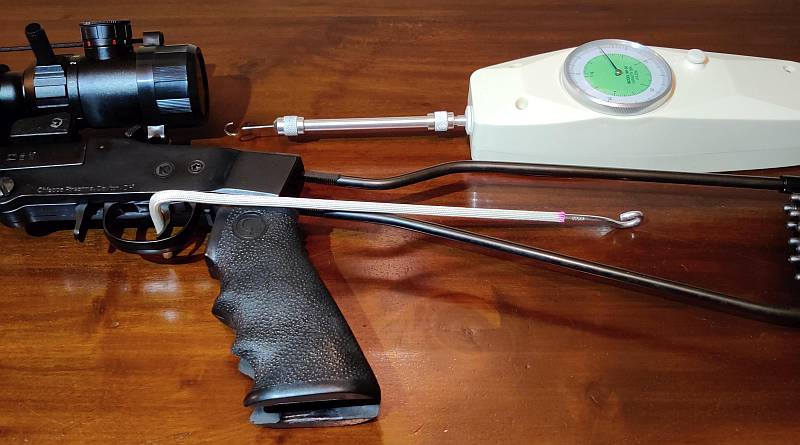It was at IWA 2019 I first got to handle the new Lionsteel B40, but the show knives were pre-production samples as there were still a few manufacturing tweaks left to finalise; it took a little longer to get hold of this final production model. Another strong design by Mik Molletta, the B40 is intended as a bushcraft knife. For this review of the Lionsteel B40, I have also partnered it with the smaller M1 which makes for an ideal secondary/backup blade, and is small enough to be a (non-folding) pocket knife.
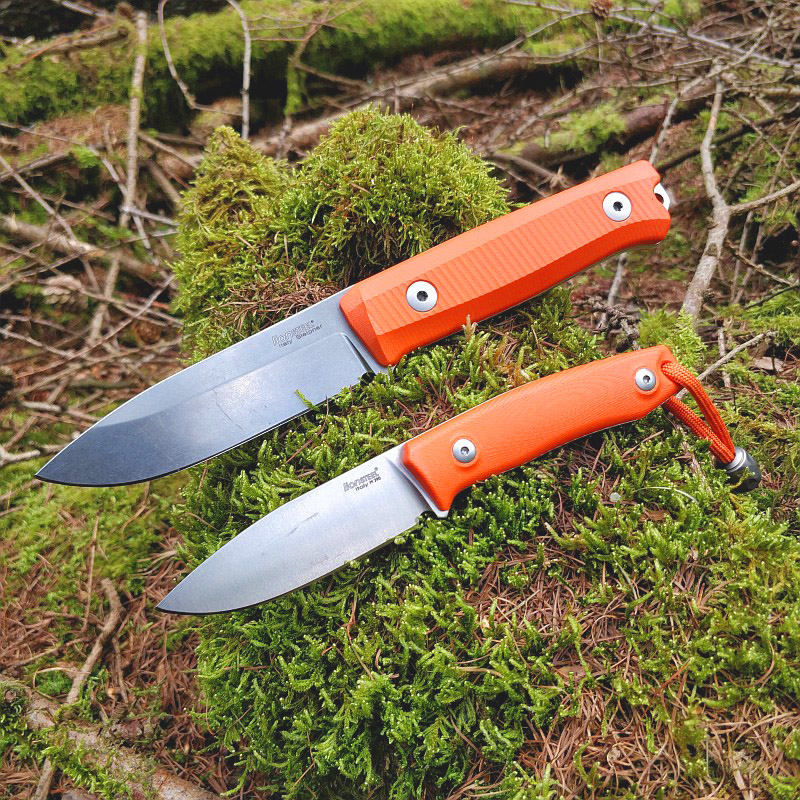
Onto the details:
What’s in the box?:
A quick look at the presentation. In this case, the B40 was a new production model, but the M1 was a ‘show knife’ straight from IWA, so might not have the full packaging.
Starting with the sheaths:
Both knives have leather sheaths, a material I prefer over any other for the sheath.
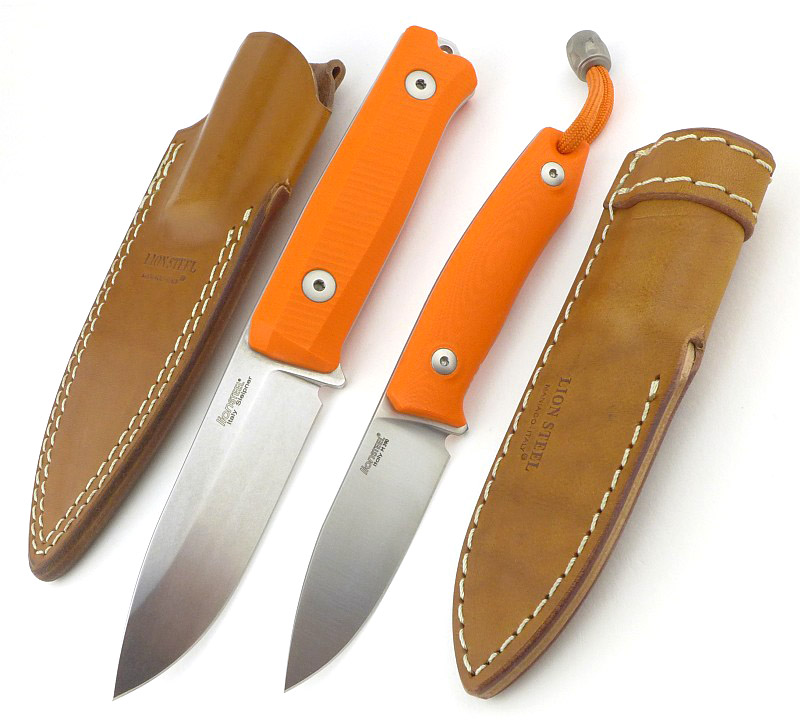
A good look round the B40 – Things to look out for here are:
The B40’s proportions and geometry make it look like many other bushcraft knives. This is as the design has to primarily fulfil the requirements of wood processing and portability.
A good look round the M1 – Things to look out for here are:
At the size it is, I can’t help but think of the M1 as a pocket knife that doesn’t fold. A pocket knife without the compromises a folding knife’s handle has, and without the concerns of a lock, slip-joint, or friction mechanism. A properly formed handle and no compromise in the strength of the blade.
The Blade and Handle – Detailed Measurements:
For full details of the tests and measurements carried out and an explanation of the results, see the page – Knife Technical Testing – How It’s Done.
The B40’s blade is made from Sleipner steel and the M1 from M390.
What it is like to use?
You might have noticed the orange; neither of these knives need to be orange, but for me the priority is not losing a tool in the outdoors. This makes the high visibility handles a great choice.
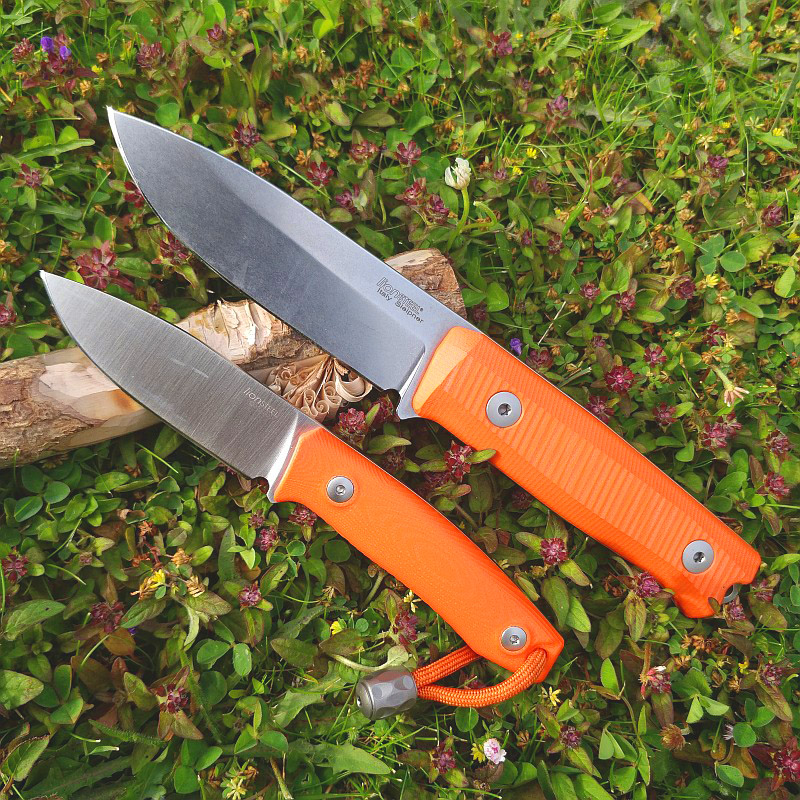
Before moving onto using these knives, I also had the opportunity to convert the B40 from orange G10 to more traditional wooden handles. Removing and swapping the handles is easy, but the tubular bolt is a tight fit in either handle material so you need to ‘unscrew’ it while applying some pressure to get them out. There is a major difference in the appearance, and feel, with the wooden handles. It is transformed into a traditional looking knife, and the wood feels lighter and possibly as if it has a little more grip. It also becomes a lot more camouflaged in the woods, so the choice is yours. I’ve popped the orange G10 back on.
I’m not a fan of pull-lanyards (the smaller piece of cord giving some extra grip with smaller knives), as I find them mostly getting in the way or flapping about annoyingly, so the M1 with its Titanium beaded pull-lanyard immediately had me considering removing it. STOP! I was wrong. For the M1, this pull-lanyard with bead works perfectly.
I’ve said it before, and I’ll say it again, the M1 is a non-folding pocket knife. The sheath might have a belt loop on it, but the overall size when sheathed is still easy enough to pop into a pocket. Now instead of having to choose a folder you can have a fixed blade.
To start with, the pull-lanyard gives you something to easily grab to take the M1 out of your pocket. Then when unsheathing it, although you can get enough grip by just holding the handle, by using the lanyard and its bead, you bring it into your hand so much more easily.
My hands take XL gloves and I find the M1’s handle to be a three-finger grip. The lanyard and bead, gives the fourth finger something to hold and add a little more stability.
I’m perfectly happy to admit when I’m wrong, and the M1 with its Titanium beaded lanyard has shown me I was wrong to consider removing it.
While on the subject of lanyards, without going into the safety arguments for and against, there is a design issue I’ve come upon with the B40 and its lanyard hole. This issue is thanks to the interestingly placed firesteel scraper. As shown in the next gallery, this scraper works very well without a lanyard cord, but should you wish to use a lanyard on the B40, you’ll be covering it in sparks every time you use the scraper. You might then find your lanyard unintentionally becomes tinder and gets burned away. I will be grinding a flat on the blade spine to use instead of the scraper provided.
The B40 hits that sweet spot in size where the handle is full size, allowing a strong grip, and the blade is small enough for power and control, and large enough to use for batoning without being cumbersome. This is why many bushcraft knives look quite similar, and are similar in size.
Use of Sleipner steel falls outside my preferences for a bushcraft knife. Being only a semi-stainless steel, it theoretically needs more care than a steel with higher stain resistance. On its own, this is only part of choosing the right steel, as frequently the reduction in stain resistance is combined with a steel that is easier to sharpen in the field. Sleipner is both hard (so harder to resharpen) and less stain resistance, so would normally have me looking elsewhere. But this is not my first Sleipner blade, and so far I’ve found the stain resistance to be much higher than indicated by its composition. None of the Sleipner blades have given me any issue with corrosion, and none have yet stained despite intentionally not caring for them. When sharpening, it is obvious the Sleipner steel has a high wear resistance, so does require some effort. Diamond stones definitely make this easier. After stropping off a burr formed during sharpening, the Sleipner steel has been giving a very good sharpness, so considering its wear resistance, it actually seems relatively easy to sharpen.
There is an interesting look to the B40’s handle with the flat grip faces having ‘corners’. At first glance these seem like they might become problematic hotspots in hard use. However the rest of the handle, where most of the grip pressure is applied, is rounded and comfortable. These ‘corners’ can be felt, but also provide positive resistance to the knife twisting in your hand.
A knife with a ‘scandi’ blade has become a very popular type of knife for bushcraft, and for good reason; the scandi blade is very good for working wood. But personally I find that to be its limiting factor as the blade’s specialist ability impacts on everything else you might ask of it.
With the B40’s blade, the design has been kept with a leaning a little more towards a utility blade, but with plenty of ability for hard work with wood. As you have seen in the previous gallery, the B40 handles wood very well.
For this review I included the M1 as a companion blade to the B40. Something to use for finer tasks, and as a backup blade. It is too small to choose to use for heavy tasks, but the blade stock used means that if you were caught out with only the M1 it would still be a very capable blade.
Using a full flat grind on the M1 makes its blade a much better slicer than its 3.2mm stock might otherwise dictate.
Lionsteel’s M1 is a knife you should not overlook. It is an excellent general purpose knife that is small enough to carry to pocket-carry. If only the UK knife carry laws permitted this as an EDC, but they do not, so it will unfortunately be limited to duties at home and will certainly be a backup blade for those times I can carry a fixed blade.
The partnership of the B40 and M1 has indeed worked very well.
Review Summary
The views expressed in this summary table are from the point of view of the reviewer’s personal use. I am not a member of the armed forces and cannot comment on its use beyond a cutting tool or field/hunting knife.
Something that might be a ‘pro’ for one user can be a ‘con’ for another, so the comments are categorised based on my requirements. You should consider all points and if they could be beneficial to you.
_______________________________________________
Things I like
_______________________________________________
B40 – Ideal size for its intended use – bushcraft.
B40 – Sleipner steel has taken and held a great edge.
B40 – Sleipner steel – so far no signs of corrosion.
B40 – Blade geometry allows greater flexibility than many bushcraft knives.
B40 – Quality leather sheath.
M1 – M390 steel takes and holds a great edge.
M1 – Full flat grind, makes it a great slicer.
M1 – Quality ‘pocket-sized’ leather sheath.
M1 – Highly functional pull-lanyard with Titanium bead.
M1 – Super useful fixed blade pocket-knife.
_______________________________________________
What doesn’t work so well for me
_______________________________________________
B40 – Firesteel scraper sparks onto lanyard (if fitted).
B40 – Sleipner steel – not so easy for in-the-field maintenance.
M1 – Belt loop is so tight as to be almost unusable.
M1 – Blade stock almost too thick at 3.2mm.
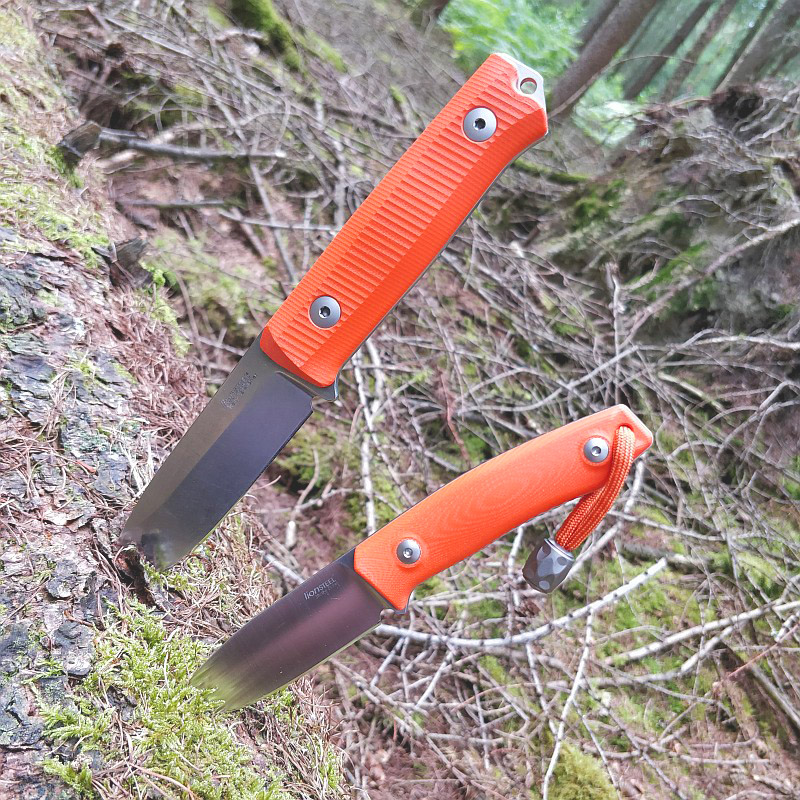
Discussing the Review:
The ideal place to discuss this review is on the Tactical Reviews Facebook Page 
Please visit there and start/join the conversation.
If you read the review entirely on Tactical Reviews, please consider visiting one of the following to start/join in any discussion.
BladeForums – Knife Reviews (US based Forum for Knife Discussion)
CandlePowerForums – Knife Reviews Section (Largest and Friendliest Flashlight Community Forum)
The BESS Exchange – A forum discussing technical aspects of sharpness and truly understanding your sharpening process.
